by GaryG
Just before this year’s SIHH, I received a kind offer from Parmigiani to wear one of the brand’s watches during the week and I was quick to accept. Over the years, I’ve bought several Parmigiani watches, and two of MrsGaryG’s favorite pieces are her Kalpa Piccolas: one with a self-winding mechanical movement and mother-of-pearl dial and the other in steel with a striking red dial (see My Wife, The Watch Collector).
I hadn’t had much contact with Parmigiani over the past few years, though, so was eager both to wear one of the brand’s most distinctive watches and to learn more about its current collection and plans.
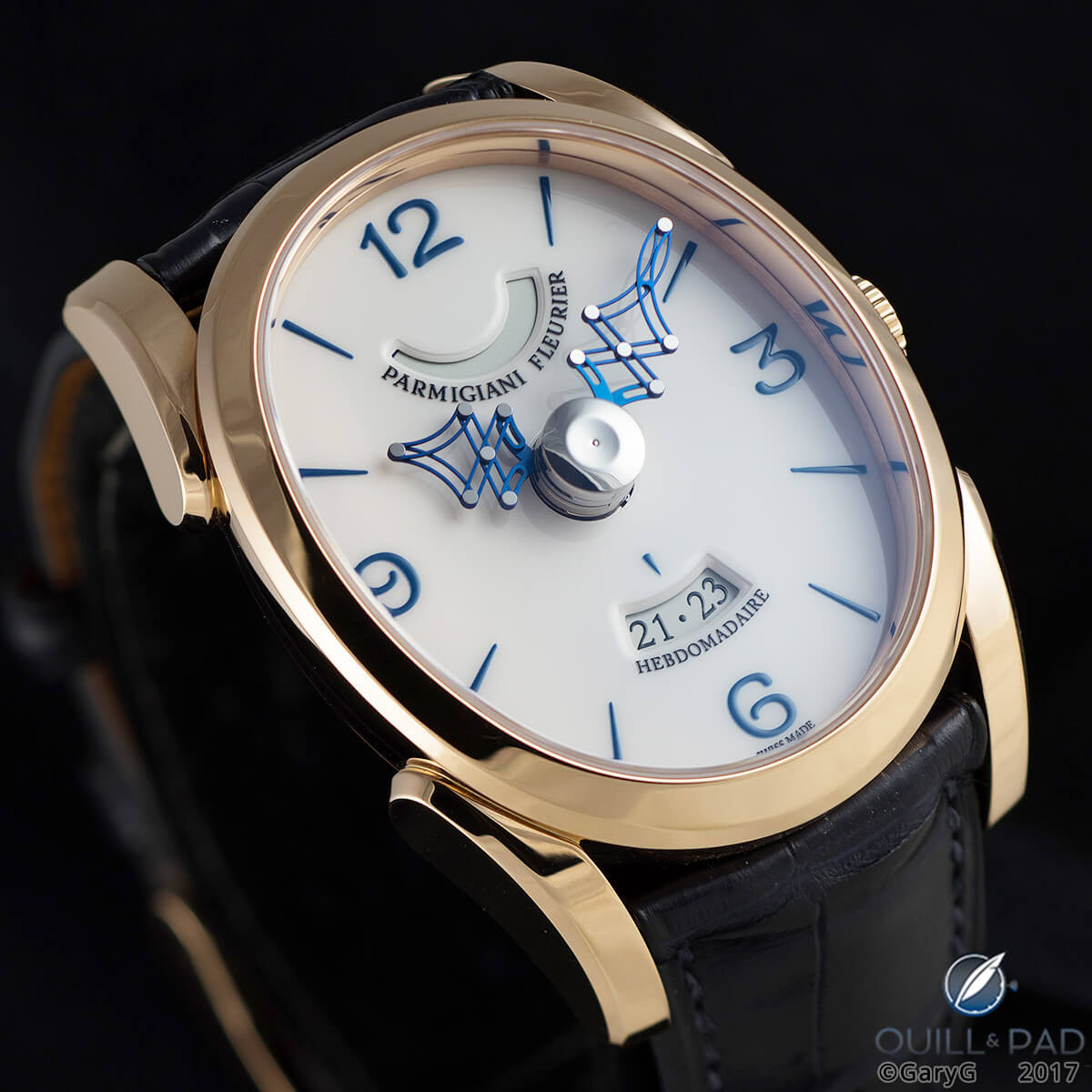
The Parmigiani Ovale Pantographe in red gold
The Parmigiani Ovale Pantographe
The moment I liberated the Pantographe from its box I was impressed: this is one serious watch.
The size alone (45 x 37.3 mm and 12.5 mm thick) makes it formidable, as does the thick Hermès strap reaching around to a massive gold buckle under the wrist. Happily, thanks to the dramatically curved (and beautifully detailed) lugs, it sat well on my wrist, making it an amiable partner for strolling the halls of SIHH.
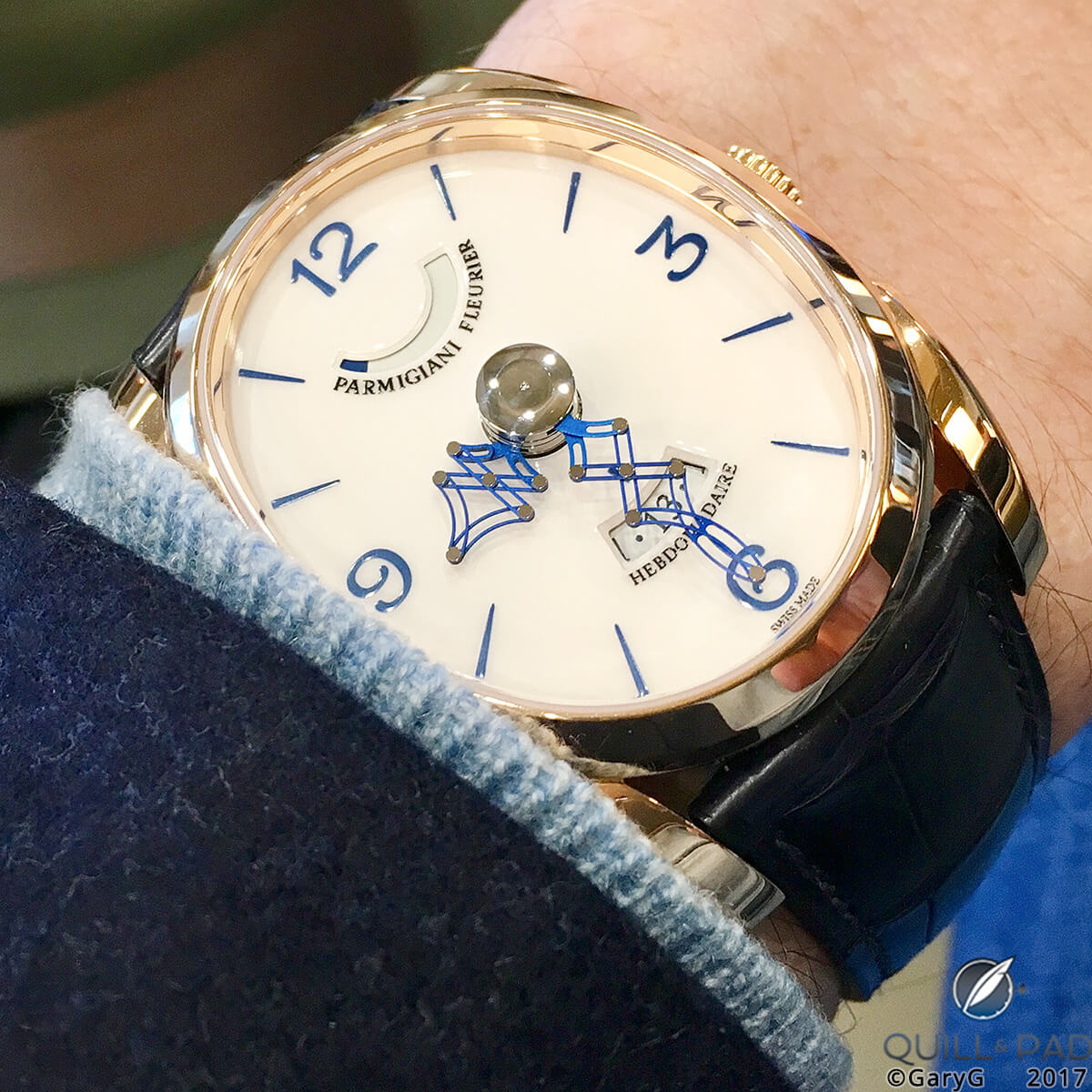
On the wrist: Parmigiani Ovale Pantographe
One thing that hasn’t changed with Parmigiani over time is that its watches are beautifully made. Checking out the case from various perspectives reveals a bevy of interesting curves and shapes, and the enamel dial with thickly printed blue indices glows in the light while displaying just the right touch of ivory to avoid harshness.
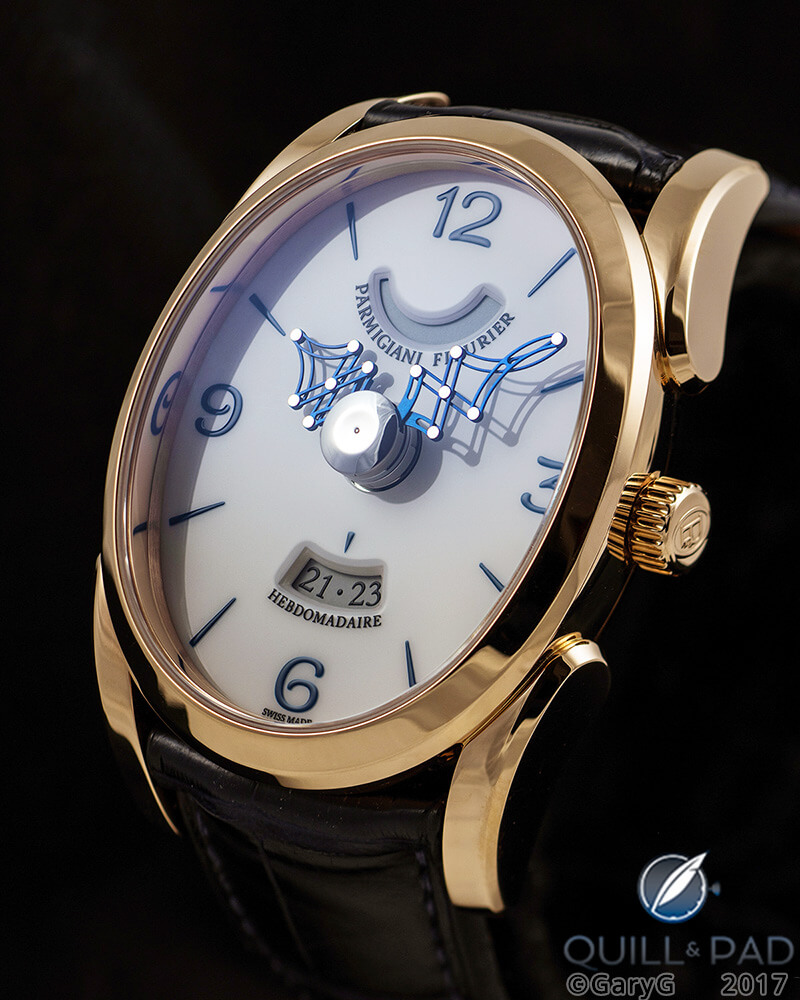
Ivory and blue: dial of the Ovale Pantographe from Parmigiani Fleurier
The movement, designated Caliber PF111, is a variant on Parmigiani’s time-tested eight-day Caliber PF110. That particular “Hébdomadaire” movement has long been a favorite of mine and was one of the things that first drew me to Parmigiani. I still remember the first time I held a watch containing the PF110 up to my ear and heard nothing – or so I thought until I found a quieter room and was able to pick up its finely tuned, almost silent beat.
In the photo below, you can see the high quality of the movement finishing, including gleaming bevels and the multiple sharp, hand-finished interior angles. I’m also quite fond of the bridge shapes, including the small sub-plate at the upper left of the photo integrated almost seamlessly into the larger surface, as well as the fact that this is a so-called shaped movement made to fit into an oblong watch rather than a round movement surrounded by a large void.
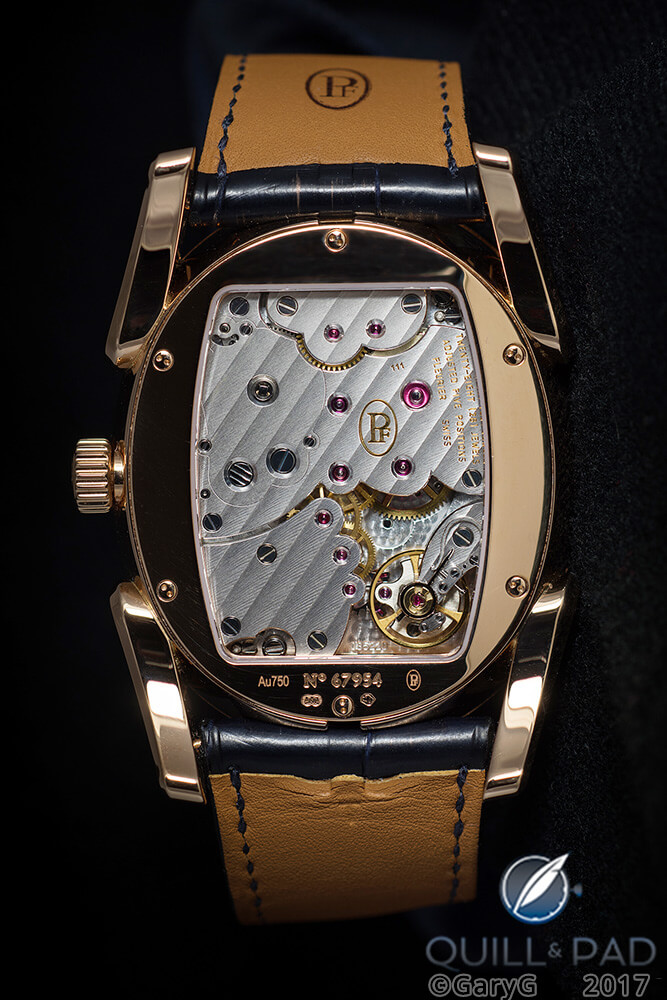
Splendid finishing: Parmigiani PF111 movement
Then, of course, there’s the feature that makes this watch unique: the pair of pantograph-style hands that shorten and lengthen as they move around the dial in order to fill the oval space.
While the idea for the Pantographe wristwatch originated from one of the many museum pieces that have been restored at Parmigiani, a vintage pocket watch from 1780, new technical solutions must be developed to make the cam-driven mechanism at the center of the dial robust enough for wristwatch use and modern wearing habits.
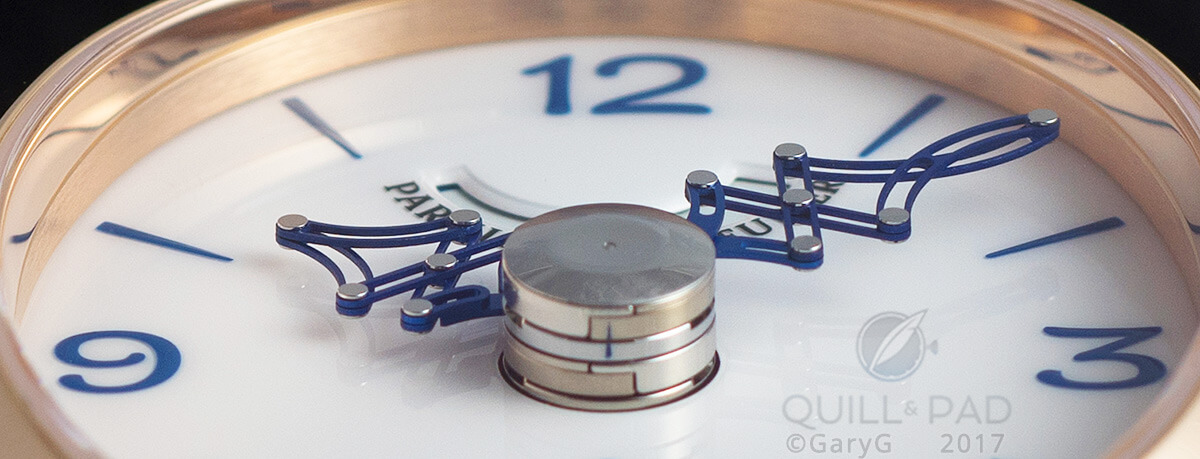
Dial and hand detail, Parmigiani Ovale Pantographe
The hands have actually evolved over the years since the introduction of the first Parmigiani Pantographe in 2013: in the current versions, an added set of arms and pivots have been added to the hour hand assembly to enable it to stretch farther from the center of the dial.
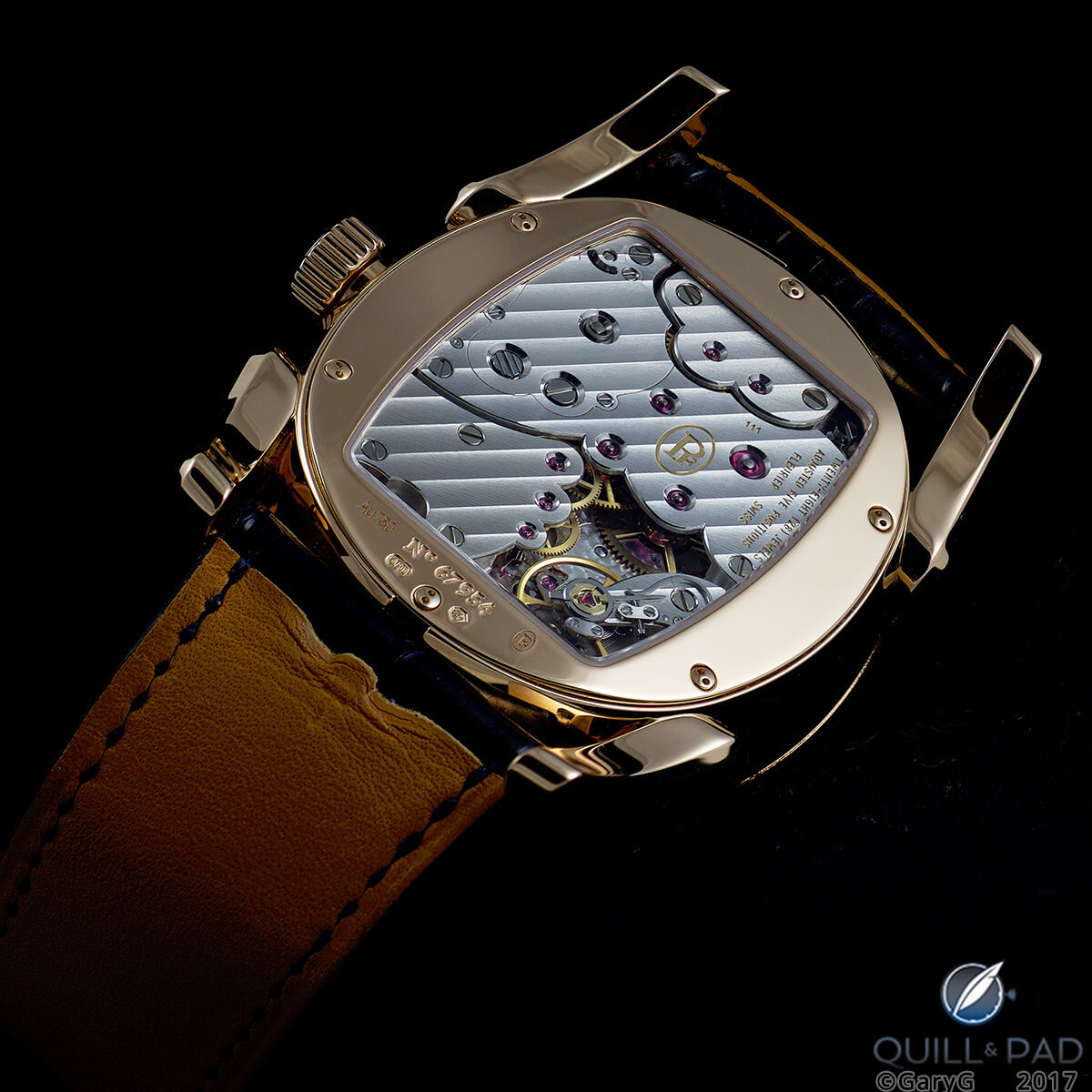
Back to the back: Caliber PF111 movement, Parmigiani Ovale Pantographe
Visiting with Parmigiani at SIHH
At SIHH 2017, our small group of collectors had the opportunity to meet with members of the Parmigiani team to see several of this year’s introductions as well as the privilege of spending time with Michel Parmigiani himself.

Michel Parmigiani at SIHH 2017
As a fan of Parmigiani’s Fleurier’s earlier watches, I was particularly pleased to see the re-introduction of the Toric line with its classically fluted bezel. And in the current economic climate, it was good to see the new Tonda 1950 in steel, powered by the well-finished PF702 micro rotor movement and priced at a pocketbook-friendly €8,950.
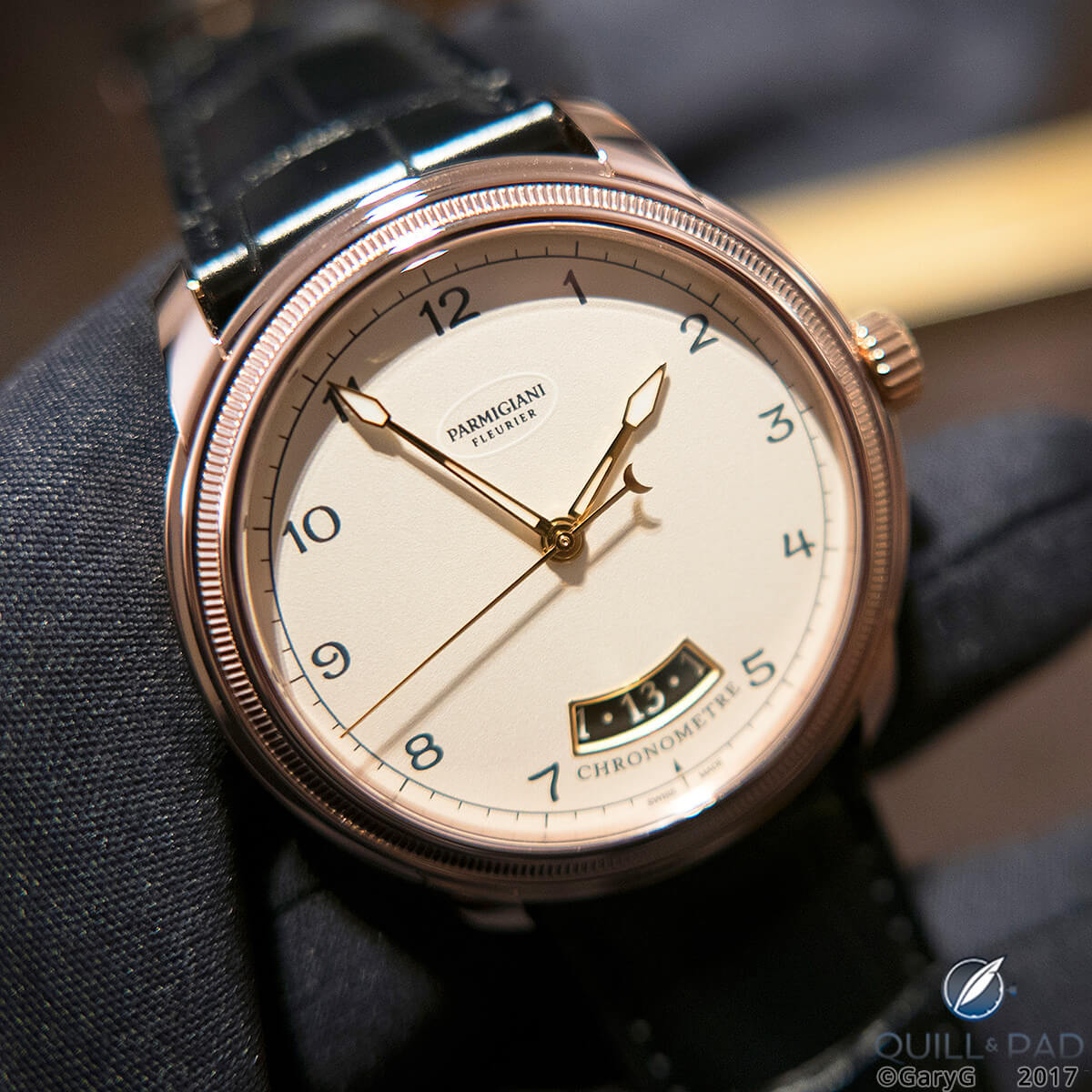
The Toric returns: Parmigiani Fleurier Tonda 1950 in red gold
We also had the opportunity to see a new Bugatti-themed flyback chronograph and other Tonda models with black, blue, and white-colored meteorite dials as well as a variety of treasures including a selection of ornate minute repeaters.
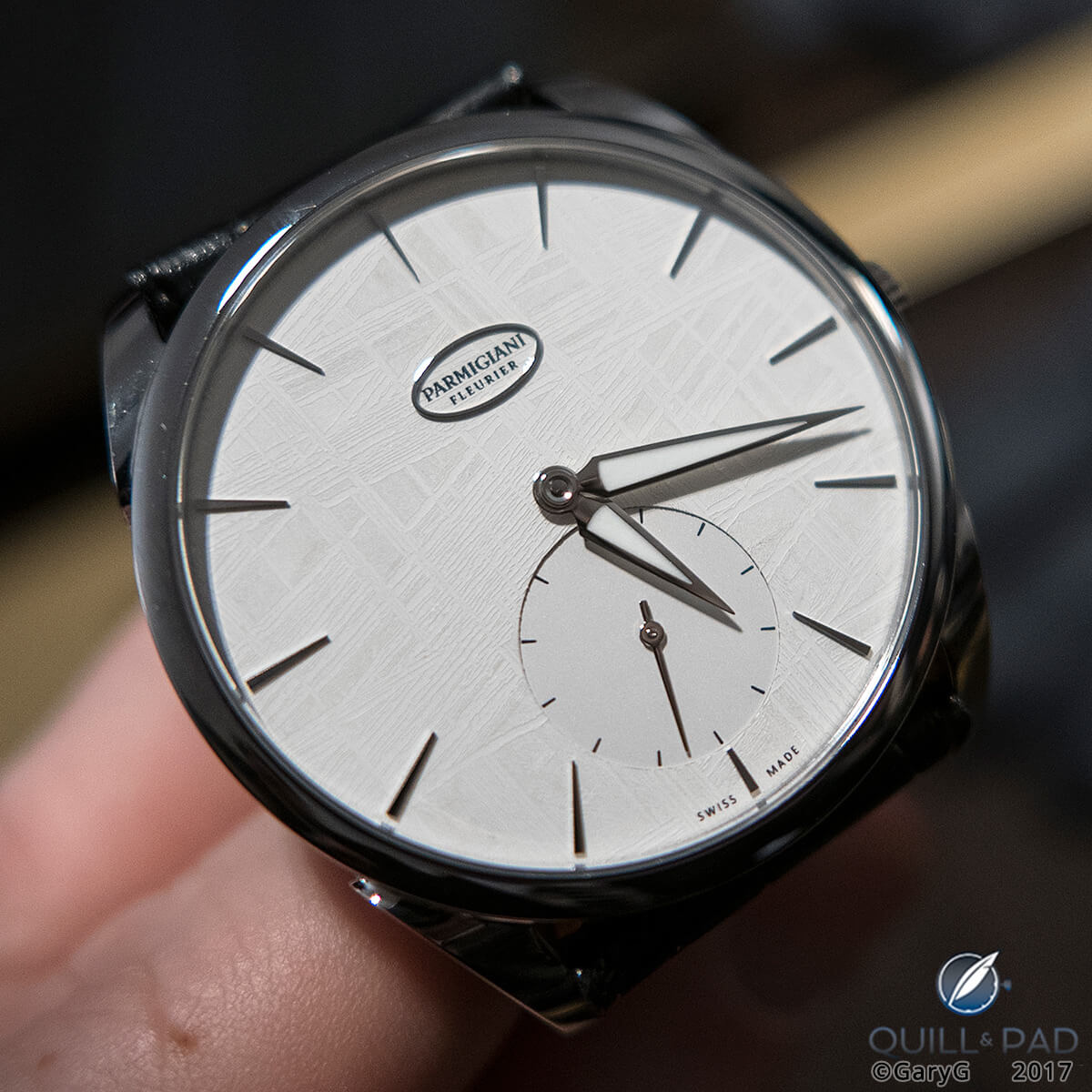
Meteorite dial Parmigiani Tonda at SIHH 2017
Parmigiani present and future, and what the Pantographe could mean
At our group’s SIHH week-concluding dinner, we were reflecting on our pleasant visit with Parmigiani when one of our members asked, “With all that they have going for them, why haven’t they achieved greater success?”
I had to confess that as a fan of the brand, the same question had nagged at me for a while. And although I haven’t made a systematic study of Parmigiani’s situation, here’s what my gut tells me.
Too many notes. For a brand of its size, Parmigiani tries to cover a lot of ground. Just look at the list of watches that we viewed in the course of a one-hour visit at SIHH: everything from sports car-themed sport chronographs to Westminster chime repeaters to the Ovale Pantographe.
Is there an intended center of gravity to Parmigiani’s line, and if so what is it?
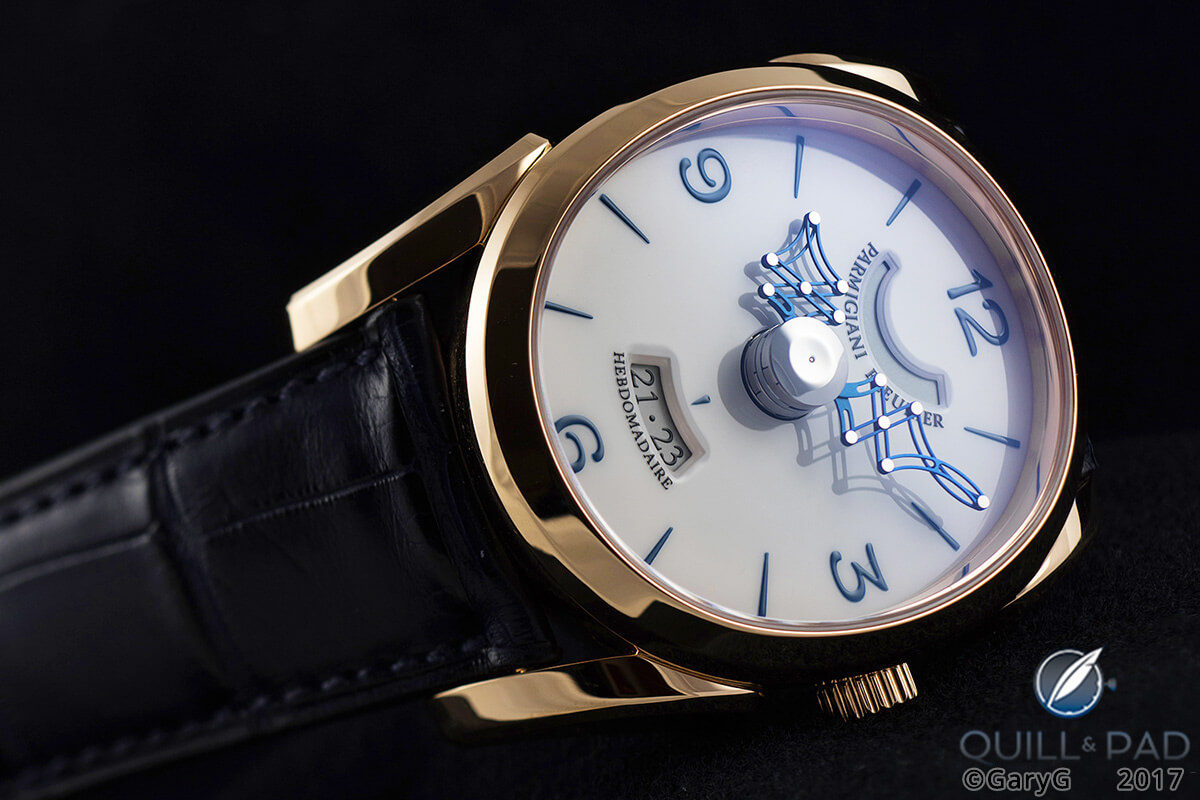
In the spotlight, but is it in the sweet spot? Parmigiani Ovale Pantographe
Product-based thinking. While a great many of Parmigiani’s watches are very appealing in my opinion, I don’t get the sense that they are developed with a specific consumer or segment in mind, and (related to the first point above) it’s not clear how the various products and sub-lines fit into a coherent portfolio view. Several years ago, I asked Parmigiani’s former CEO to describe his market segmentation model to me, and he responded with a list of price points rather than with any consumer-centered descriptions.
One of the crowd. Parmigiani has many potential differentiators, including its level of finishing, distinguished foundation in restoration, and a patrimony-rich collection of classic watches and clocks, including the watch that inspired the Ovale Pantographe. But as a collector I don’t hear them shouting about any of them, nor do I have an easy time answering the question, “For what type of consumer preference or watch is Parmigiani clearly head and shoulders above its competition?”
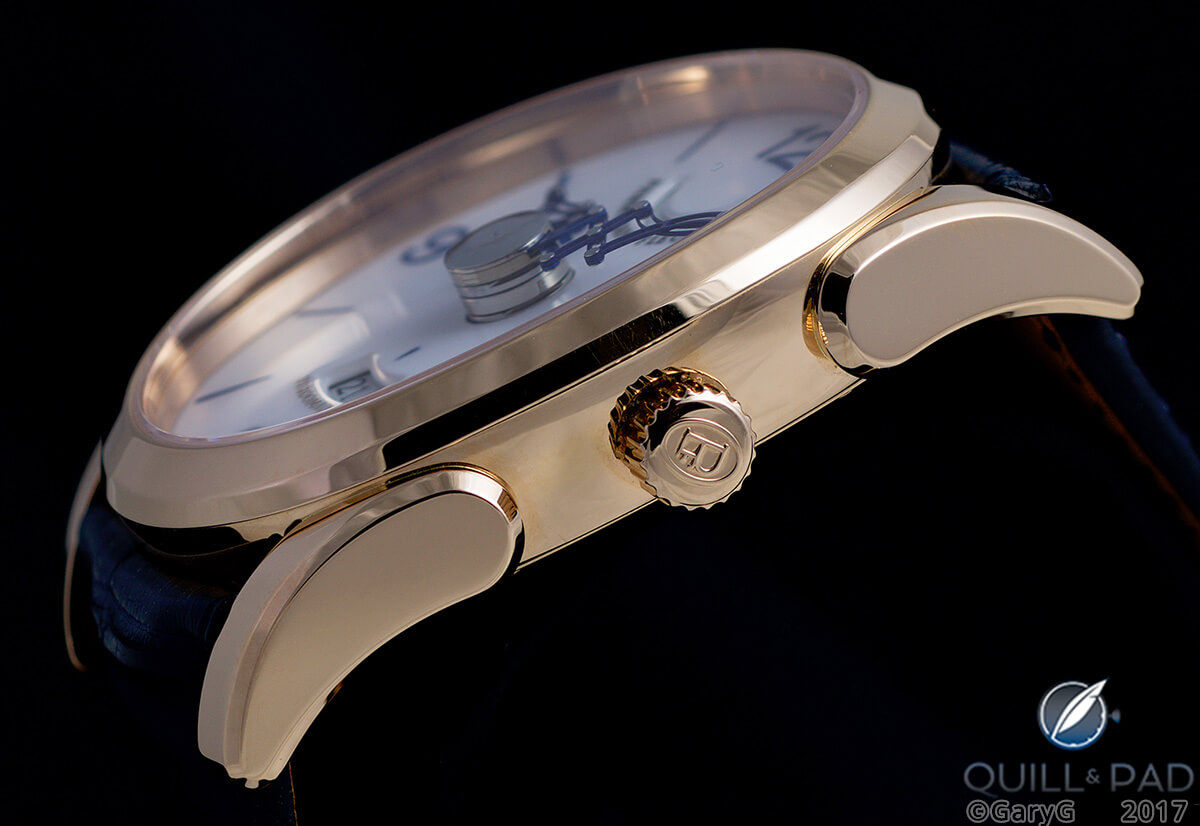
Clear distinction? Sinuous curves and shapes of the Parmigiani Ovale Pantographe
So, what to do?
To be clear, I’m guessing that this may not be quite what my friends at Parmigiani had in mind when they called me up about wearing the Ovale Pantographe, but I care deeply enough about them and respect Mr. Parmigiani enough to crawl out on the limb.
Play to win. Decide on the one or two ways in which you are going to be different, and better, than all of your competitors. Not three, five, or ten, but one or two. What do you want to be famous for and why do you believe that you can achieve leadership on those dimensions?
Become storytellers. First, “tell” the stories of the buyers and collectors you want to win over to Parmigiani and keep as loyal consumers. Who are they? What are their aspirations? Where are they in their lives as watch enthusiasts and how can you reach them now with offerings they will prize and then continue to delight over during their watch-buying careers?
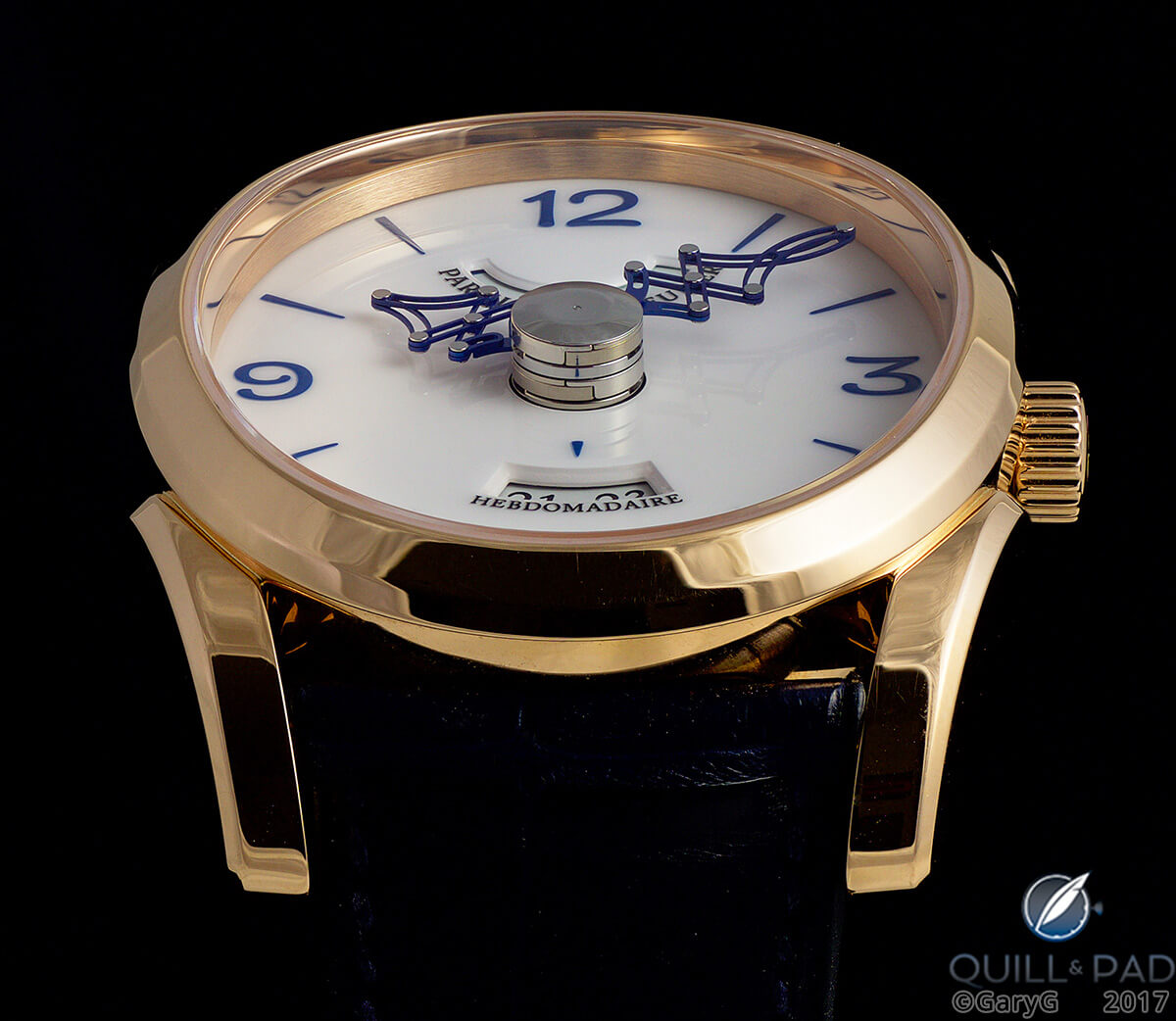
Clear patrimony: vintage-derived Ovale Pantographe from Parmigiani
Then, tell the stories that only Parmigiani can tell: about Michel Parminigiani’s “hands of gold,” which made him famous as a restorer; the historical watches owned by Parmigiani and Sandoz that inspire new interpretations; and the automata and ornate clocks that Parmigiani dazzles with at each SIHH (see Equus Forma Mechanics: The Parmigiani Fleurier Hippologia).
And, very importantly, be sure to make it manifestly clear how those stories link – directly – to the watches that Parmigiani is creating and selling today.
Focus and win. With your chosen dimensions of industry leadership and the stories of your consumers and your unique capabilities as your North Stars, “fire” every product and sub-line in your portfolio.
Imagine that you have sent all of them out into the parking lot, and then only invite back the ones that demonstrably match your target consumers’ evolving needs and that leverage your unique strengths.
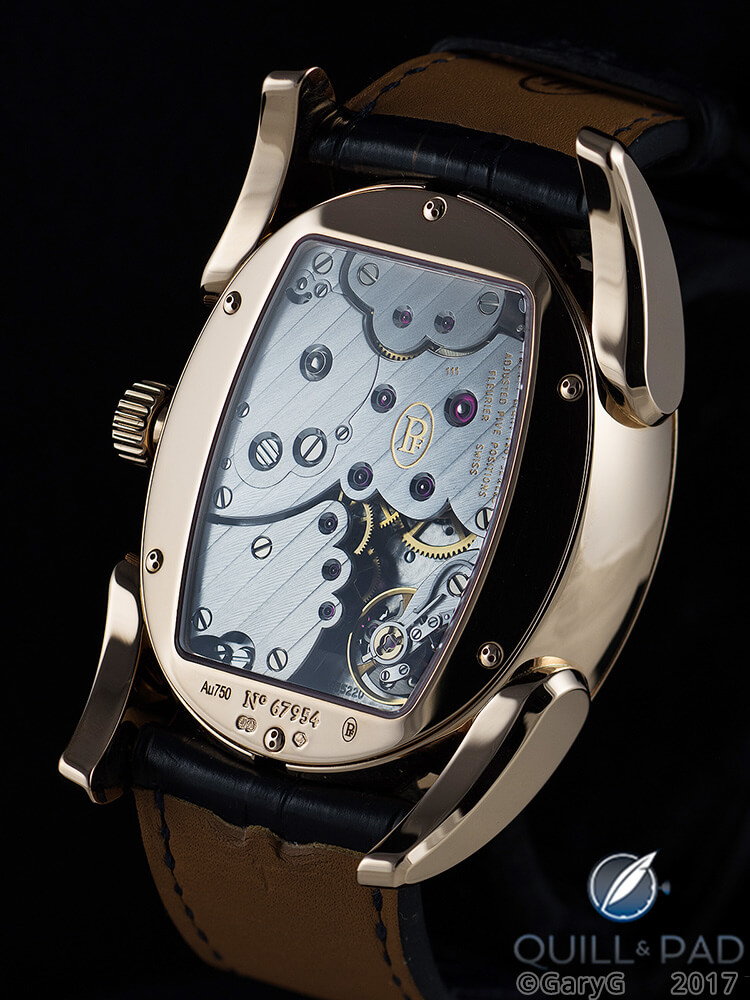
Potential part of a winning formula: excellent finishing, Parmigiani Caliber PF111
Design, design, design. When you talk with consumers, do they tell you that your watches are design icons?
The Slim d’Hermés has emerged in a short period as one based to a significant extent on sleek, modern design, while Richard Mille has struck gold over a period of many years with distinctively designed watches, in both instances based on movements from Parmigiani’s own Vaucher manufacture. If you aren’t yet taking a hard look at refreshing your design language as a way of complementing your other clear strengths, start now.
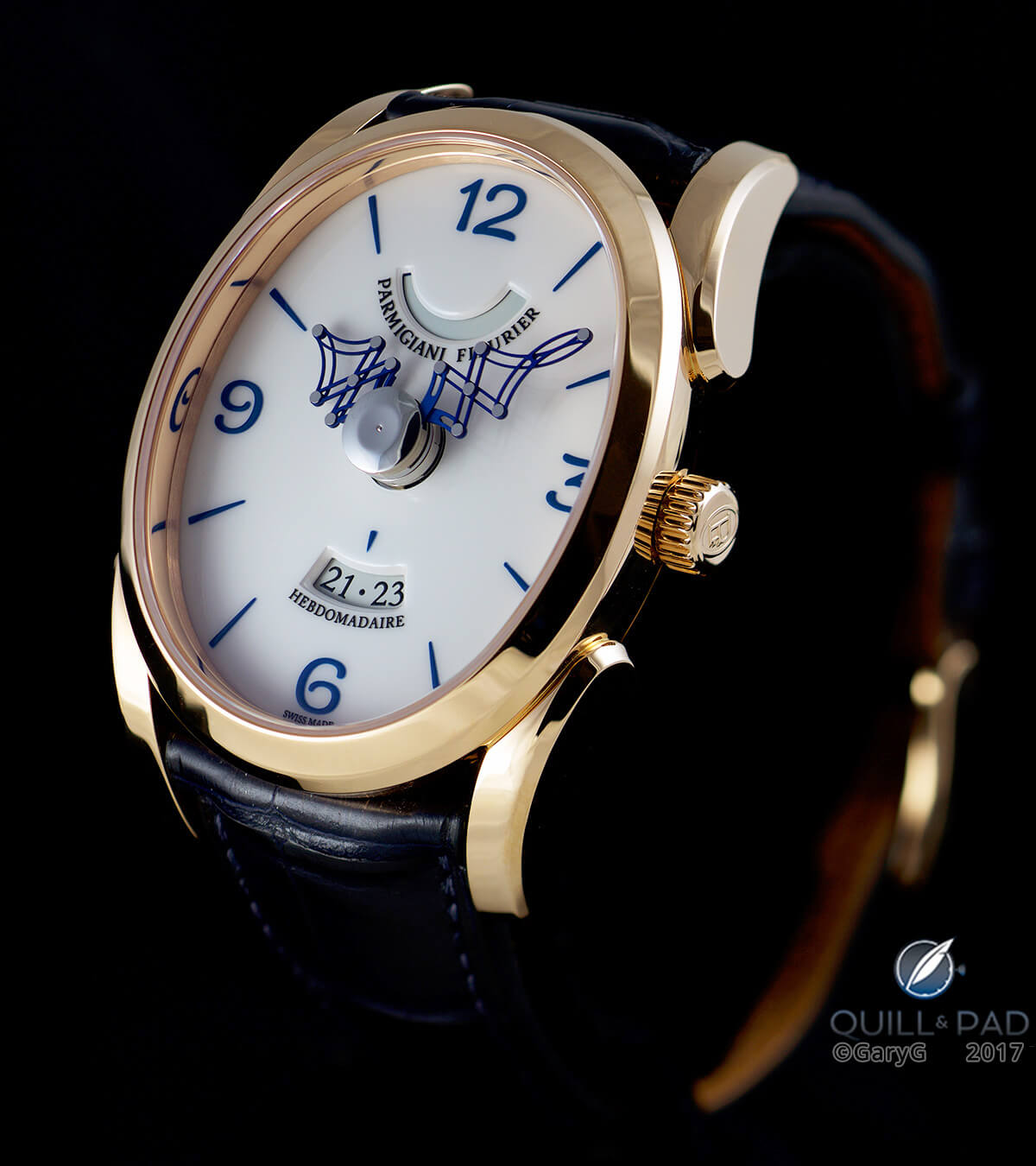
Potential halo piece: Parmigiani Ovale Pantographe
Where does the Ovale Pantographe fit into all of this?
If one potential vision for Parmigiani is as a cult brand for those in the know who value modern interpretations of classic horological innovations, it could serve as a halo piece – especially in its newly-released gold movement version.
If Parmigiani chooses other directions, such as focusing on simple watches like the steel Tonda 1950 that offer great finishing at great value, the Pantographe may fit less well.
No matter what, as a collector and enthusiast I will continue to follow Parmigiani closely and wish the brand every success!
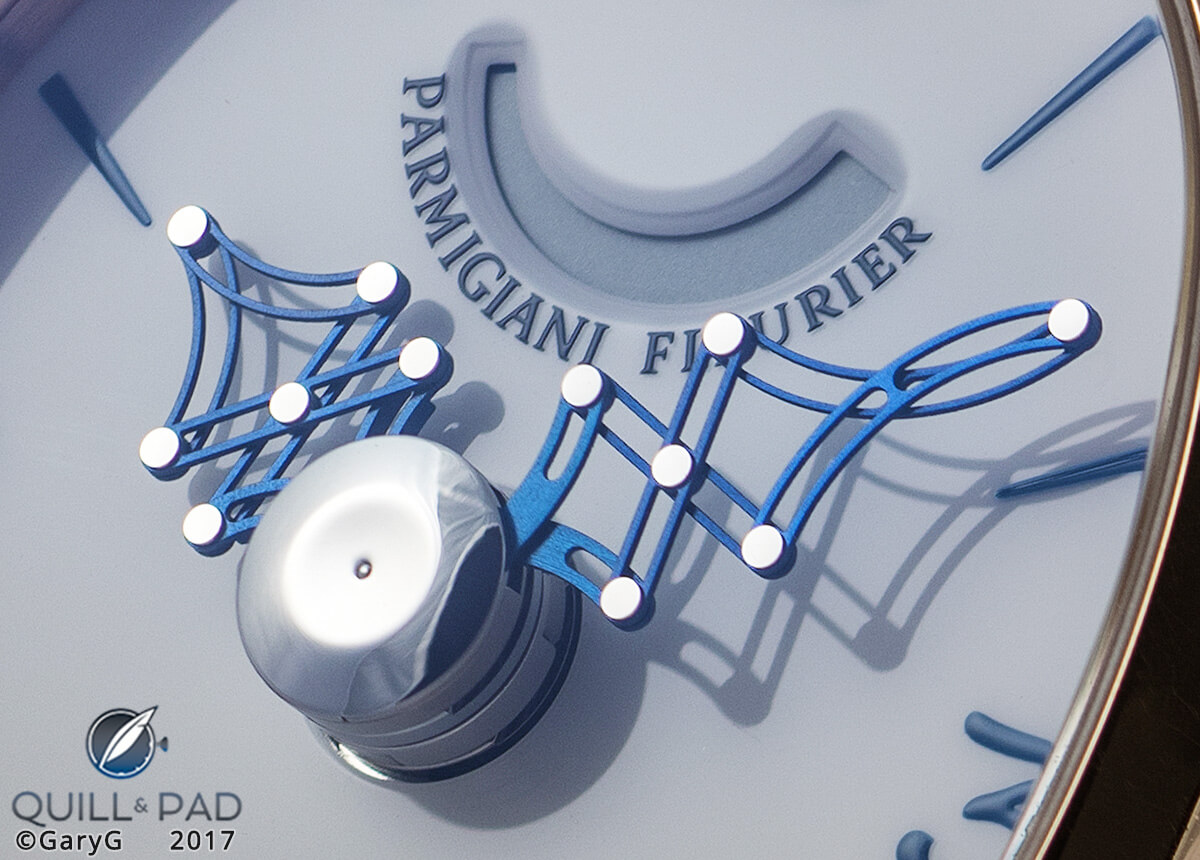
Parting shot: hands of the Parmigiani Fleurier Ovale Pantographe
For more information, please visit www.parmigiani.com/en/watch/ovale/ovale-pantographe.
Quick Facts
Case: red or white gold; 45 x 37.3 x 12.5 mm
Dial: enamel with printed indices and markings
Movement: manually wound Caliber PF111; 21,600 vph (3Hz) with 192 hours (8 days) of power reserve
Functions: hours and minutes indicated by pantograph hands; date, power reserve indicator
Price: $55,000 in red gold
Production years: 2015 to present (in updated version with extended hour indicator)
Leave a Reply
Want to join the discussion?Feel free to contribute!





















































Wow, the finishing on the enamel dial looks amazing (in particular, the fantastically neat date and power reserve windows look stunning in your macros). PF surely deserves to become another AP or ALS: just one iconic model could perhaps lead to their breakthrough – and I certainly hope they get there!
Agree! We had the chance to visit Parmigiani in Fleurier several years ago and what they are capable of doing is really impressive — as you say, it may not take that much to get the breakthrough they deserve.
Best, Gary
Hey Gary,
Parmigiani do make great pieces. I had the privelage of working with some of their pieces in a multi-brand boutique some years back.
Their attention to detail is immaculate! in some instances better than another Swiss Brand you mentioned in your article which is very well established. I found, when handling some of the pieces, in particular the Tonda, that the movement flowed seamlessly and smoothly. Their attention to detail, quite impressive.
In our region of the globe, the arguement from potential clients were all alike, why pay this price for a name that is not known or established versus well marketed, mid-level brands. (if only they researched some the companies heritage)
Hope Parmigiani have taken note of your article and start to, “play on their strengths”!
Hi Ricardo,
Thanks for sharing your thoughts and experiences — here’s hoping that Parmigiani can turn the corner!
Best, Gary
The word “Parmagiani” conjures two thoughts in the minds of collectors. First: beautiful hands! Second: incredible, underrated movement know-how! But that’s not enough. To sell watches, Parmagiani needs a unique design language – and I’m not sure they have one at the present time. I wish them well, and I commend GaryG for his excellent advice.
Thanks for sharing your thoughts — your comment convinces me even more that the topic of design will be critical to Parmigiani’s success in future.
And, thank you for the kind words!
Best, Gary
I think your advice is largely correct, Gary, particularly when it comes to design. Parmigiani seems like a brand stuck in the era when watches were conceived by engineers and design bolted on afterwards, as opposed to conceived holistically together. Parmigiani’s design is unfocussed, fussy, dated and frequently just plain tone deaf. The brand needs to recognise that while its watchmaking expertise gives it legitimacy, it has never established itself from a design point of view, and therefore could and should overhaul the entirety of its design language and watch styles. That includes freeing itself from the horned lugs, which the brand would call “iconic” but are actually a florid affectation, with edges that are far too sharp. Imagine if Parmigiani could distill its watchmaking into something that was modern, streamlined, contemporary and tasteful – hey, like the Slim d’Hermes! Well, one can dream.
The other issue, one you don’t mention, is leadership. Since Jean-Marc Jacot left, there has been no one clearly in charge. While the brand is foregrounding Michel Parmigiani as the figurehead once again, it is clear that he is uncomfortable in the limelight and is a poor communicator for the brand itself, whatever his genius at the bench.
Thanks for your thoughtful commentary, TJ. I have to confess that if you’d told me several years ago that the most acclaimed watch with the Vaucher micro-rotor movement would be from Hermes, I would have been quite surprised, to say the least.
Mr. Parmigiani is, in my estimation, a classic watchmaker! That extends to his reserved personality — certainly he is not a dynamic spokesman in the mold of Philippe Dufour or visionary advocate for his work as is Francois-Paul Journe. While I am not privy to the internal workings of Parmigiani, I suspect that you may be correct that in overall terms leadership — and from my perspective, customer- and market-centered leadership — is an area where attention is needed.
Hi Gary,
It’s good to be thinking of you again. Now I’m too old for fairs I miss our occasional meetings.
As to your thoughts on Parmigiani, perhaps they don’t need all that market theory. I think their watches are like a Saville Row suit, they have a style and quality that speaks so clearly they look after themselves and there are enough discerning customers to keep them busy.
Hi Tim,
Good to hear from you! You may be right, but then again everything that I know indicates that despite the quality and style inherent in Parmigiani’s pieces, the company has not achieved the commercial success they have sought. I’d of course be pleased to be wrong about that!
Best, Gary